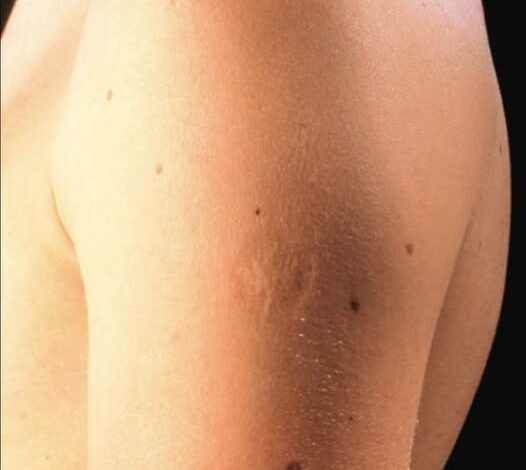Understanding Smallpox Vaccine Scars: A Medical History Written on Skin

Many people today notice distinctive circular scars on older family members’ upper arms and wonder about their origin. These unique marks tell a fascinating story of medical history, public health triumph, and the eradication of one of humanity’s most feared diseases.
A Personal Discovery Story
The recognition of these mysterious scars often begins with childhood curiosity. One particularly memorable account describes a child’s fascination with a mother’s unusual arm marking—a circular formation that resembled a faded constellation, featuring small indentations surrounding a deeper central mark permanently etched into the skin.
Like many childhood observations, this initial curiosity often fades as life becomes more complex and demanding. However, these distinctive medical scars have a way of reappearing in unexpected moments, triggering renewed interest in their significance and historical importance.
The Moment of Recognition
Years later, that same curious child, now grown, encountered an elderly woman stepping off a train. When the woman’s sleeve shifted, it revealed an identical scar in precisely the same location. This moment of recognition sparked immediate questions about the connection between these similar markings found on people of a certain generation.
The subsequent phone call to learn more about this family medical history revealed a simple but profound answer: these distinctive scars were evidence of smallpox vaccination, a medical procedure that millions of people received during the mid-20th century.
Historical Context of Smallpox Disease
Smallpox represented one of the most devastating viral infections in human history. This highly contagious disease caused severe symptoms including dangerously high fevers, painful blistering rashes across the entire body, and had a mortality rate of approximately 30% among those infected.
The disease left permanent physical scarring on survivors and created generational trauma within communities worldwide. Before modern vaccination programs, smallpox outbreaks could devastate entire populations, making it a primary public health concern for centuries.
Medical Breakthrough and Vaccination Success
The development of an effective smallpox vaccine represented a monumental achievement in medical science and public health policy. Through coordinated vaccination campaigns, the United States successfully eliminated smallpox by 1952, marking a historic victory against infectious disease.
By 1972, routine smallpox vaccination was discontinued in America because the disease had been effectively eradicated domestically. This timeline explains why people born after the early 1970s typically don’t carry these distinctive vaccination scars.
Vaccination Procedure and Scar Formation
The smallpox vaccination process differed significantly from modern injection methods. Medical professionals used a specialized bifurcated (two-pronged) needle to create multiple small punctures in the patient’s skin, typically on the upper arm.
This unique delivery method pushed the vaccine material directly into the dermis layer of skin. Over the following days, small blisters would develop at the vaccination site, eventually bursting, forming scabs, and ultimately healing into the characteristic circular scar pattern.
Physical Characteristics of Vaccine Scars
The resulting smallpox vaccine scars have distinctive visual characteristics that make them easily recognizable. They typically appear as circular formations with a central depression surrounded by smaller indentations, creating a pattern that many describe as resembling a small constellation or flower-like design.
These scars are permanent and usually measure between 2-5 millimeters in diameter. They’re most commonly located on the upper arm, though the exact placement could vary slightly depending on the medical professional administering the vaccine.
Cultural and Social Significance
For generations who received smallpox vaccination, these scars represent more than just medical history—they’re physical evidence of participation in one of humanity’s greatest public health achievements. Unlike modern vaccination records stored digitally or on paper, this proof of immunization was literally written into the skin.
Many people view their smallpox vaccine scars as badges of honor, representing their generation’s contribution to disease eradication and collective immunity. These marks connect individuals to a shared historical experience and medical milestone.
Generational Health Legacy
The presence of smallpox vaccine scars on older family members serves as a tangible reminder of how far medical science and public health have advanced. These marks represent a time when diseases that we now consider historical threats posed real and immediate dangers to daily life.
For younger generations who don’t carry these scars, they provide a visual connection to recent medical history and the ongoing importance of vaccination programs in protecting public health.
Medical History Preserved in Skin
Each smallpox vaccine scar tells a story of scientific progress, community health protection, and successful disease eradication. These permanent marks serve as living monuments to one of medicine’s greatest achievements—the complete elimination of a deadly infectious disease through coordinated vaccination efforts.
Recognizing Family Medical Heritage
If you or your family members carry these distinctive circular scars, you’re connected to an important chapter in medical history. These marks represent participation in a global health initiative that successfully eliminated one of humanity’s most feared diseases.
The next time you notice a smallpox vaccine scar on an older relative or community member, remember that you’re looking at physical evidence of humanity’s triumph over infectious disease—a permanent reminder of what coordinated public health efforts can achieve.